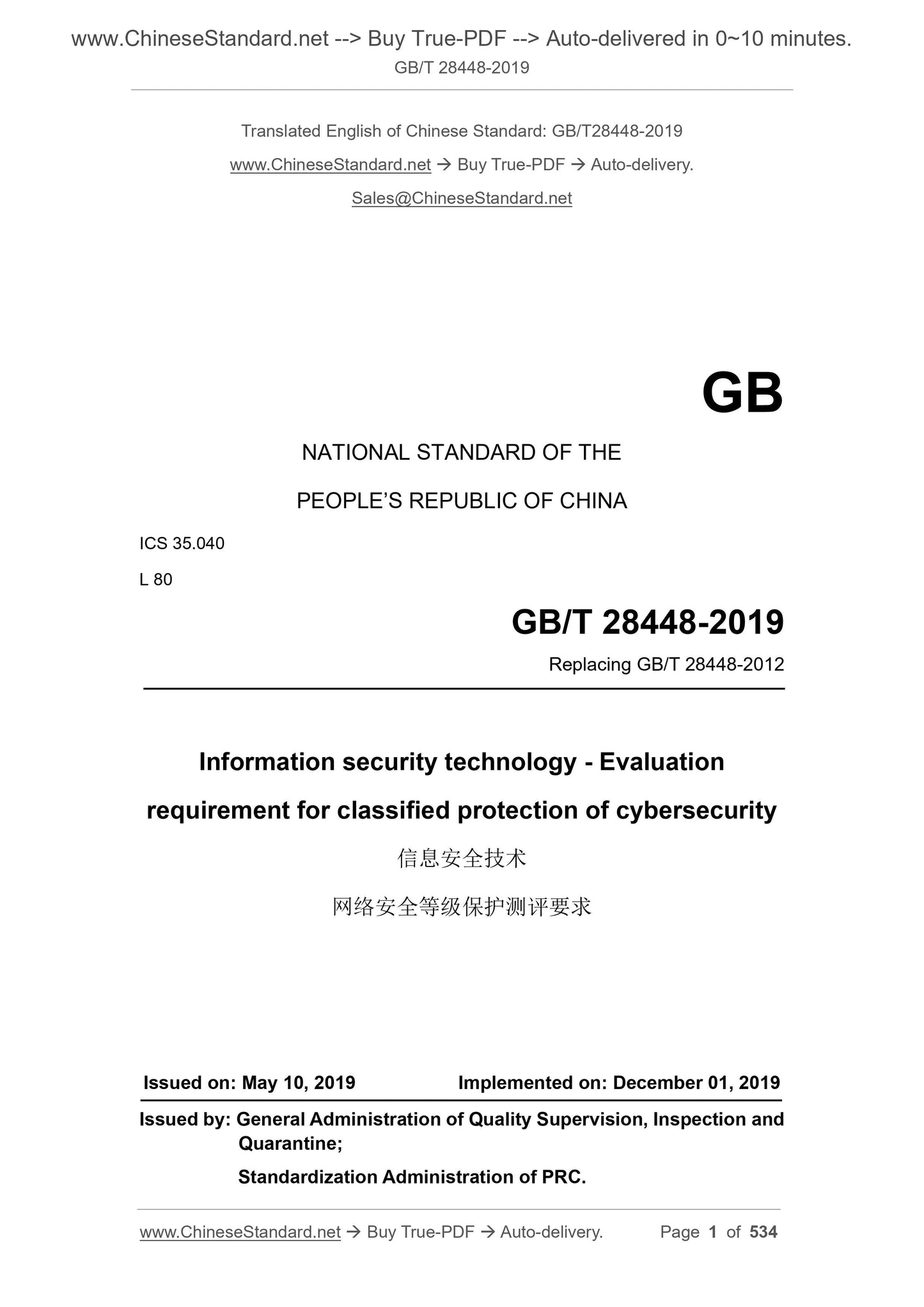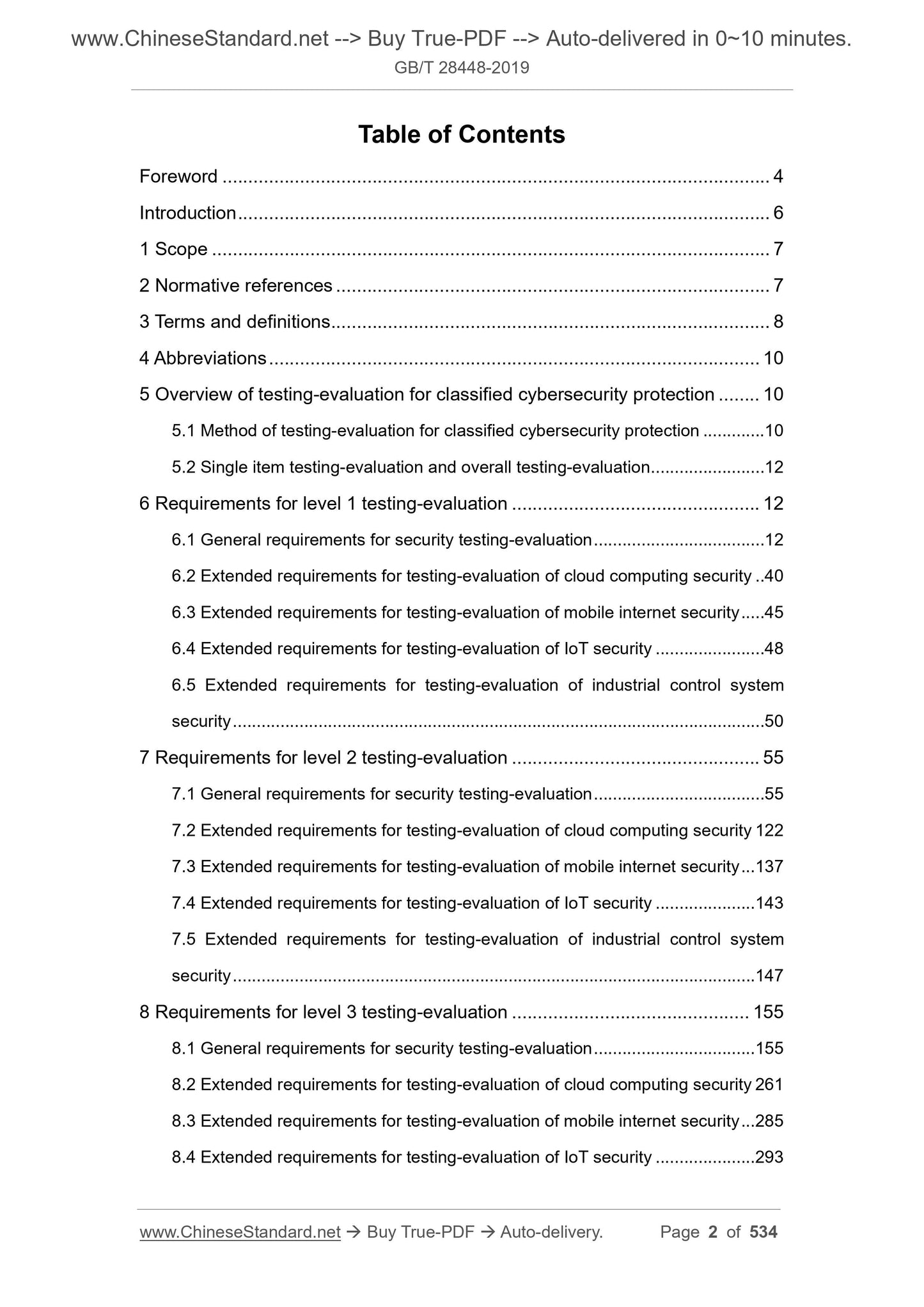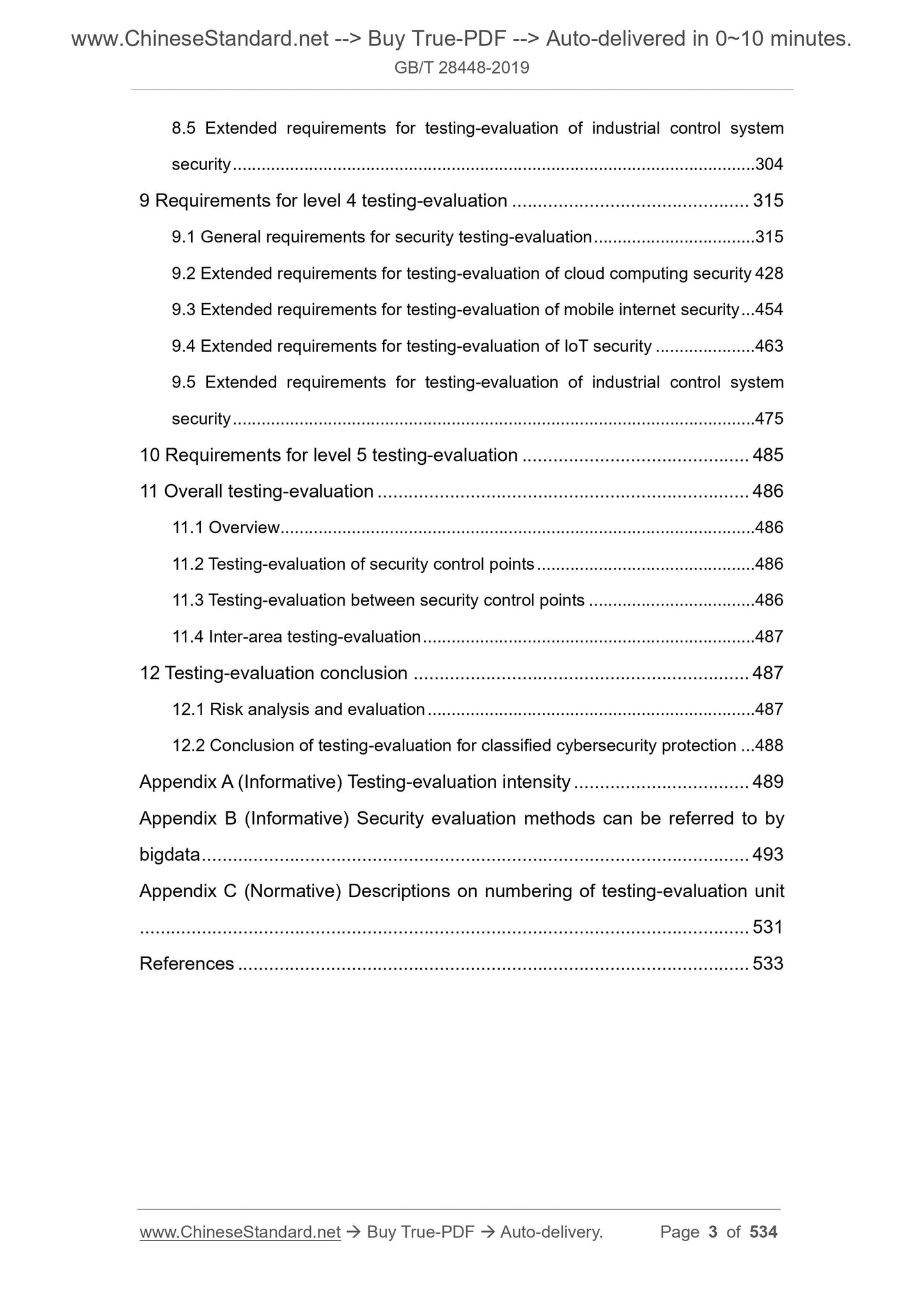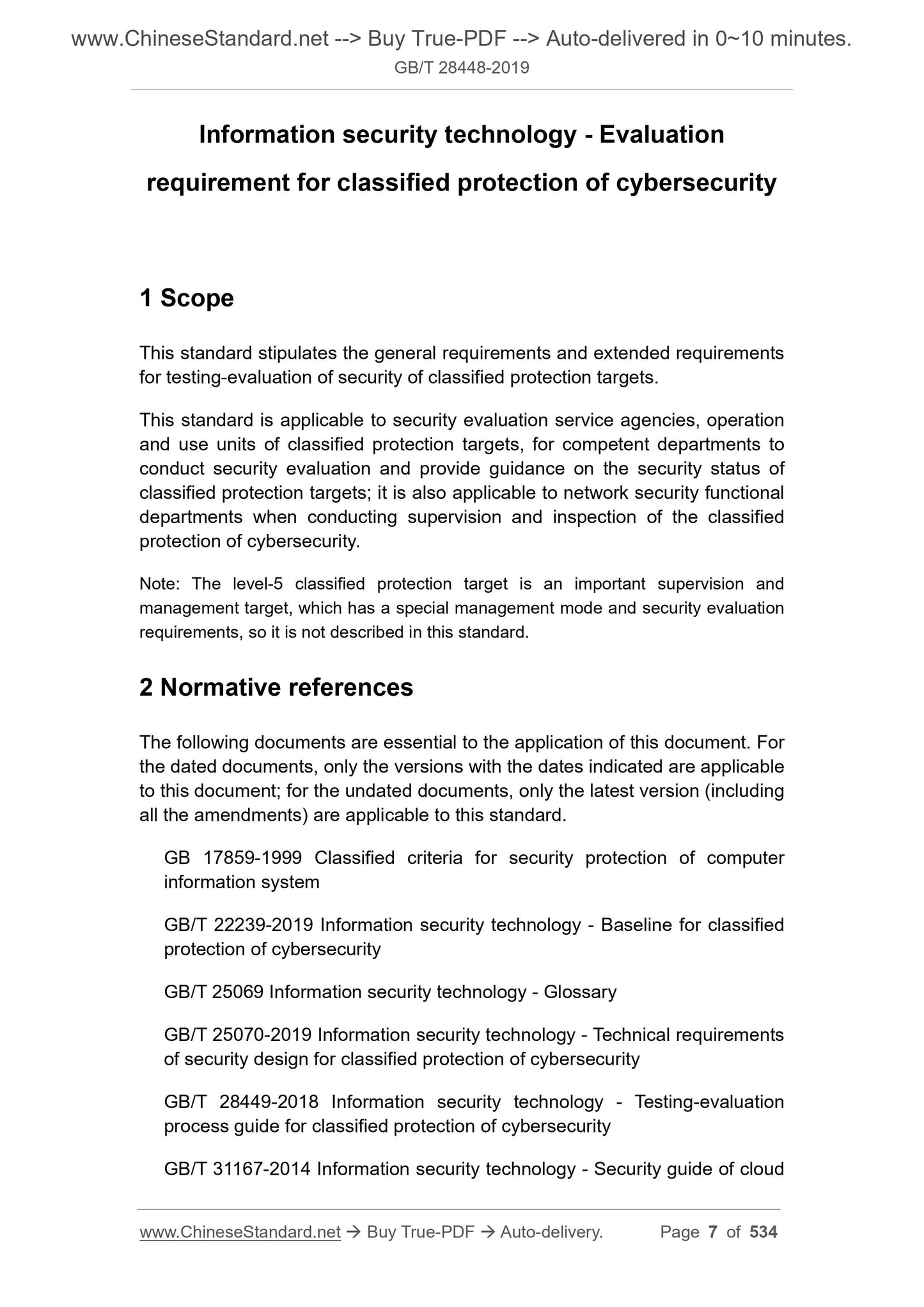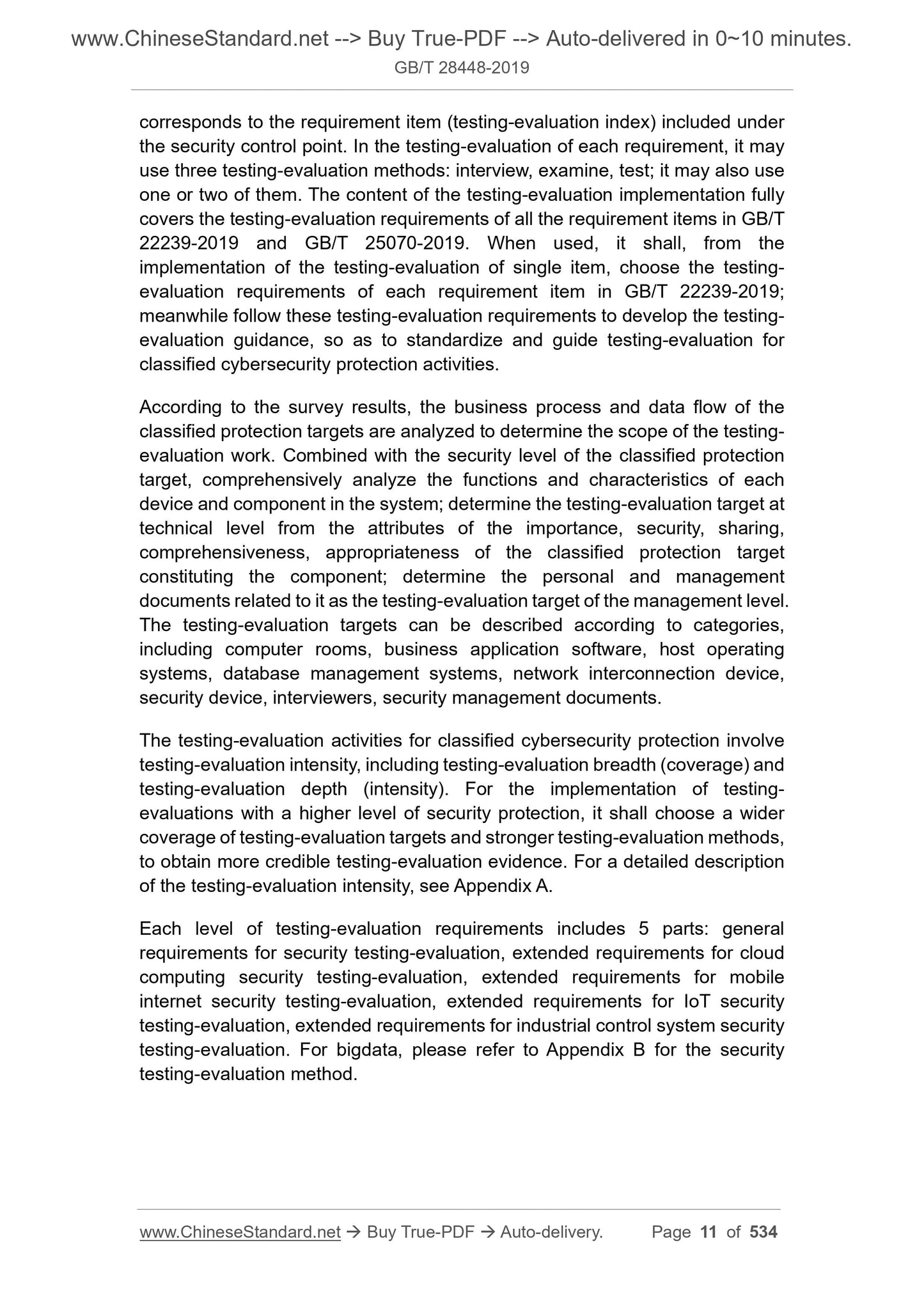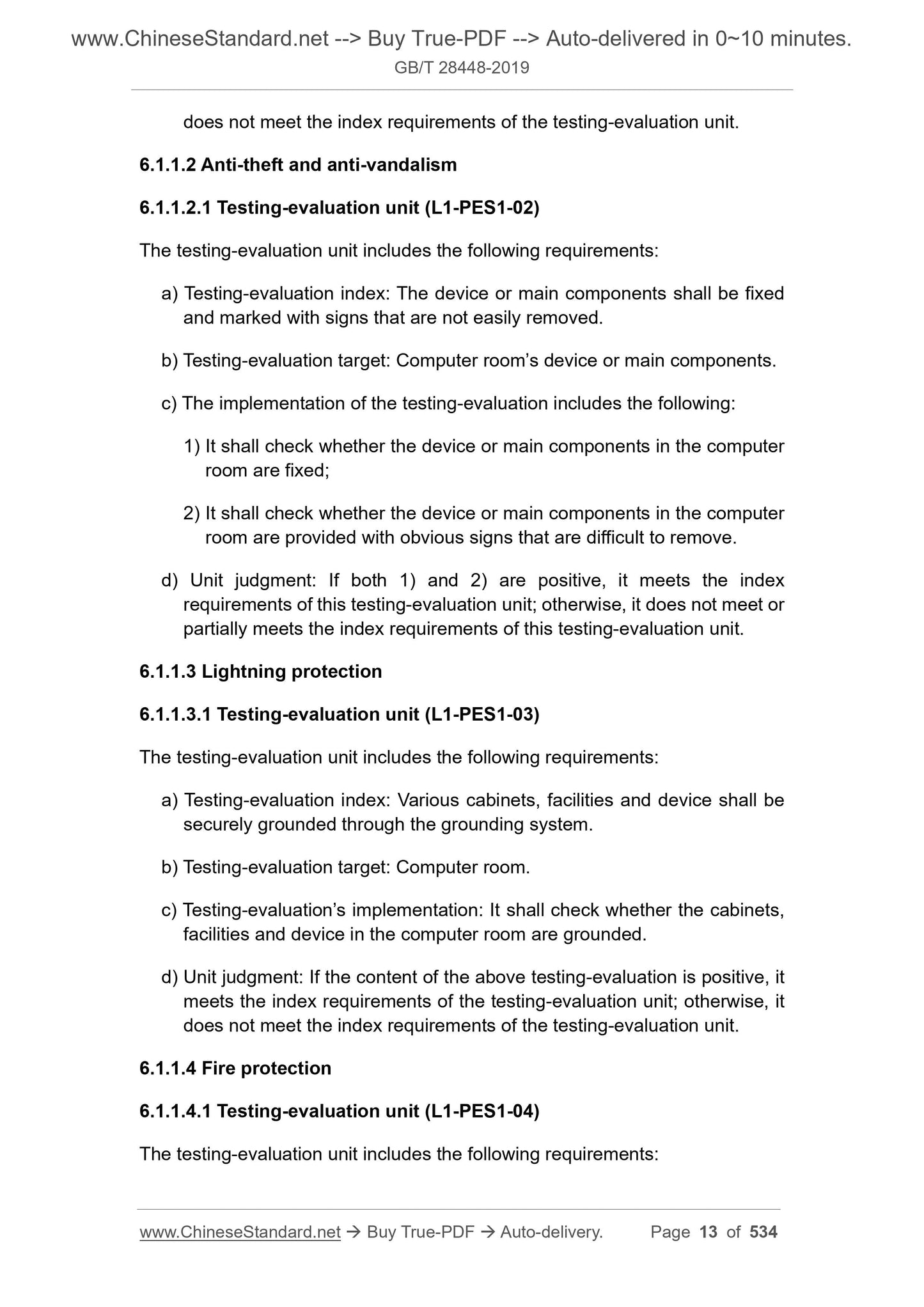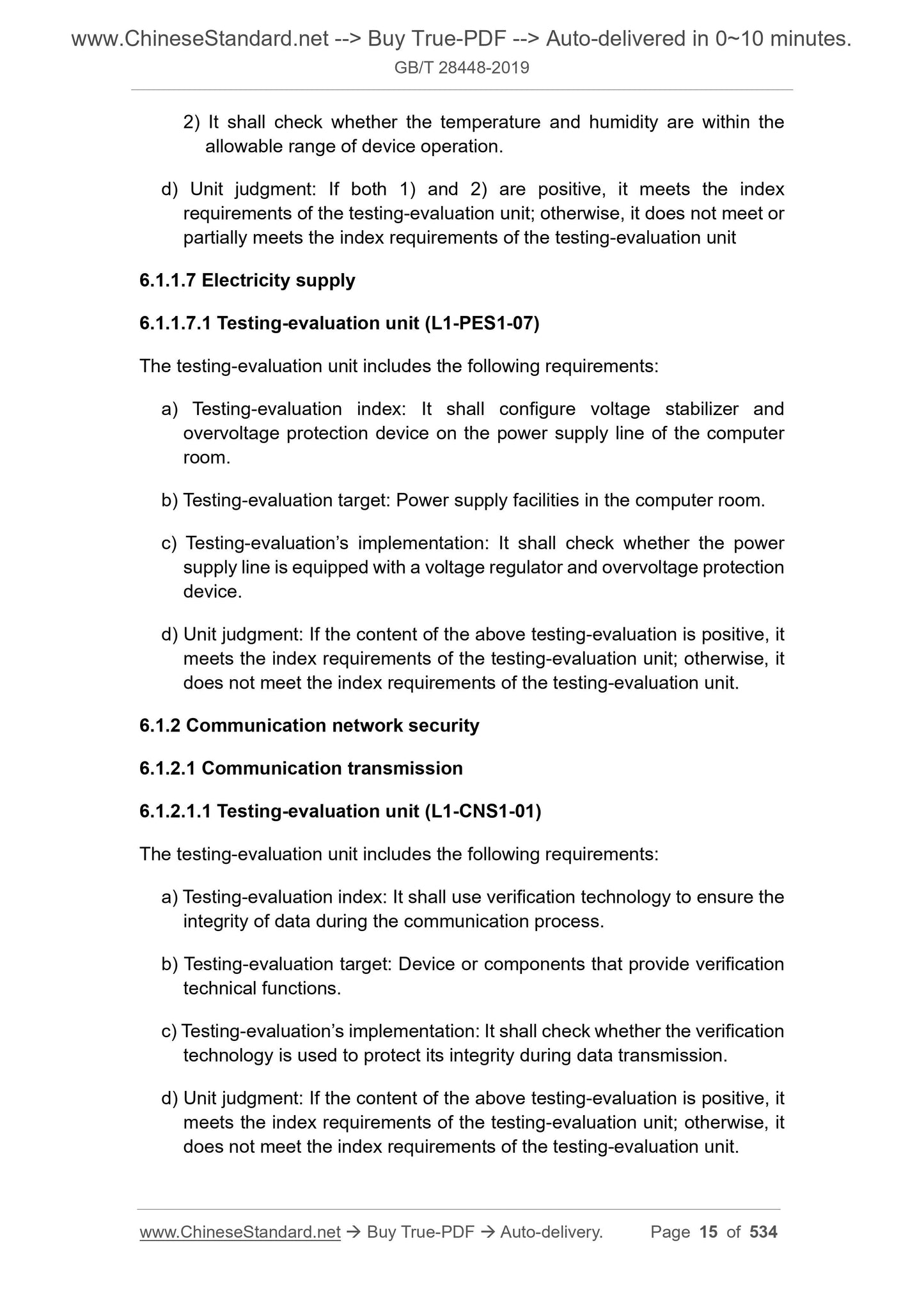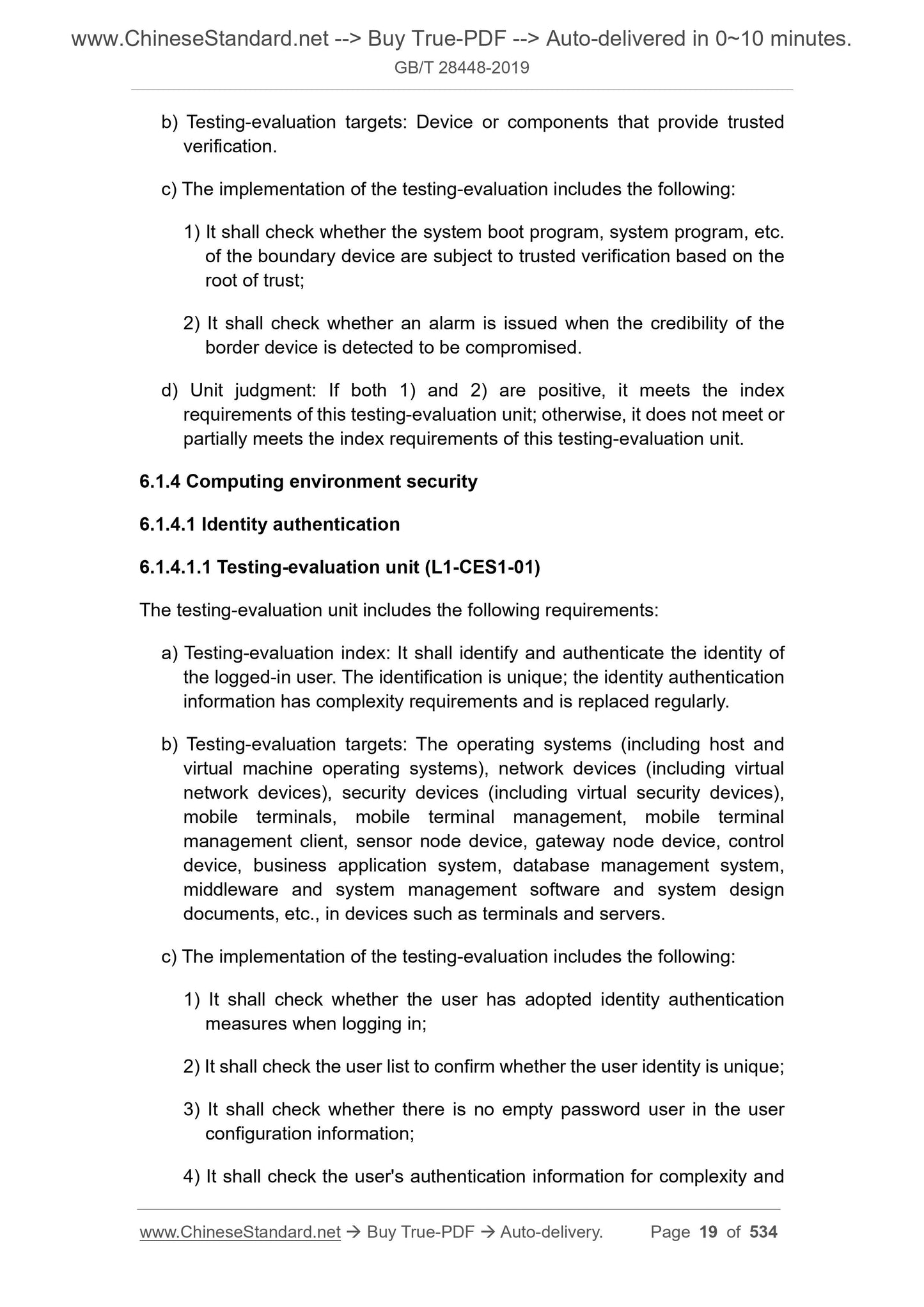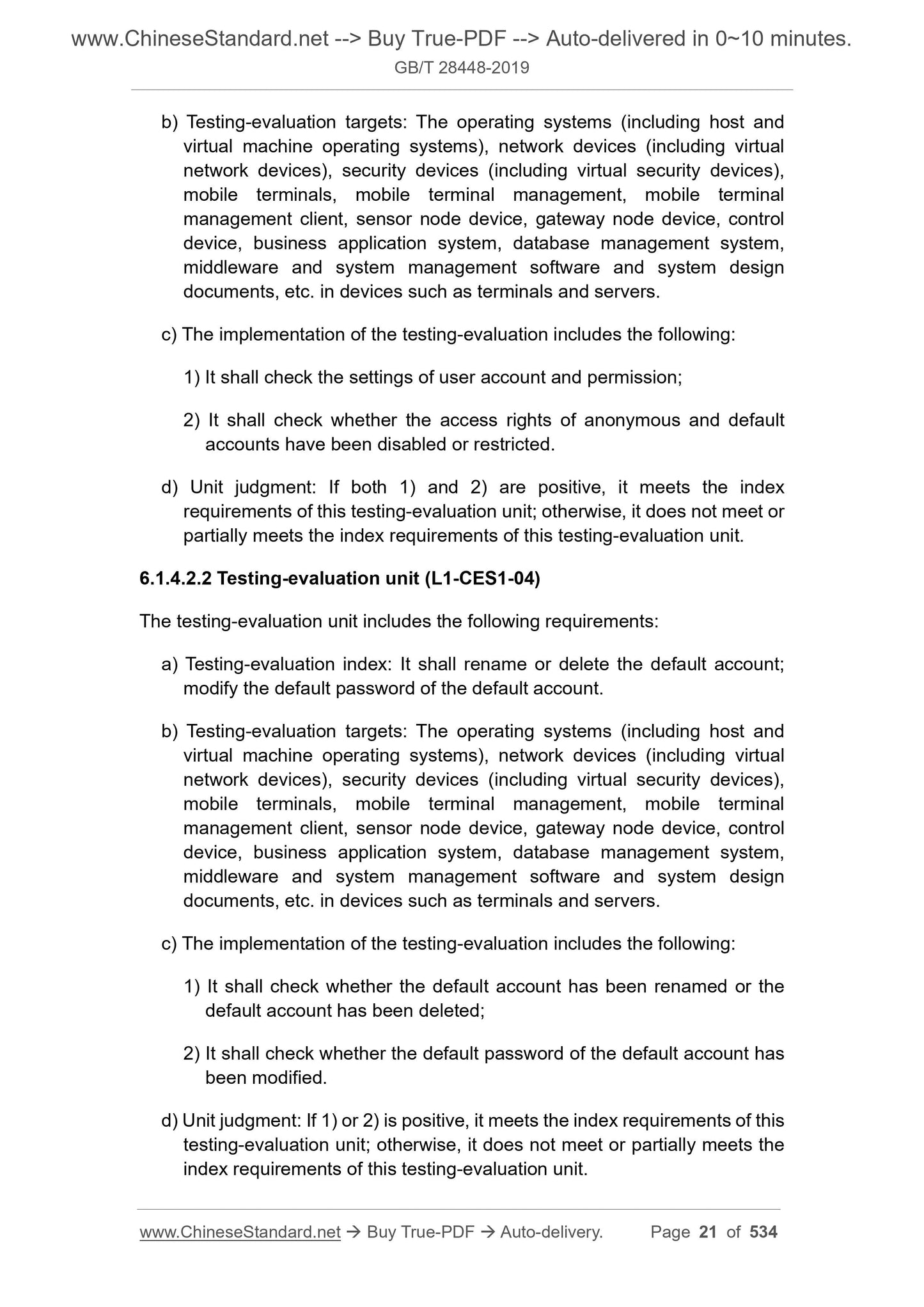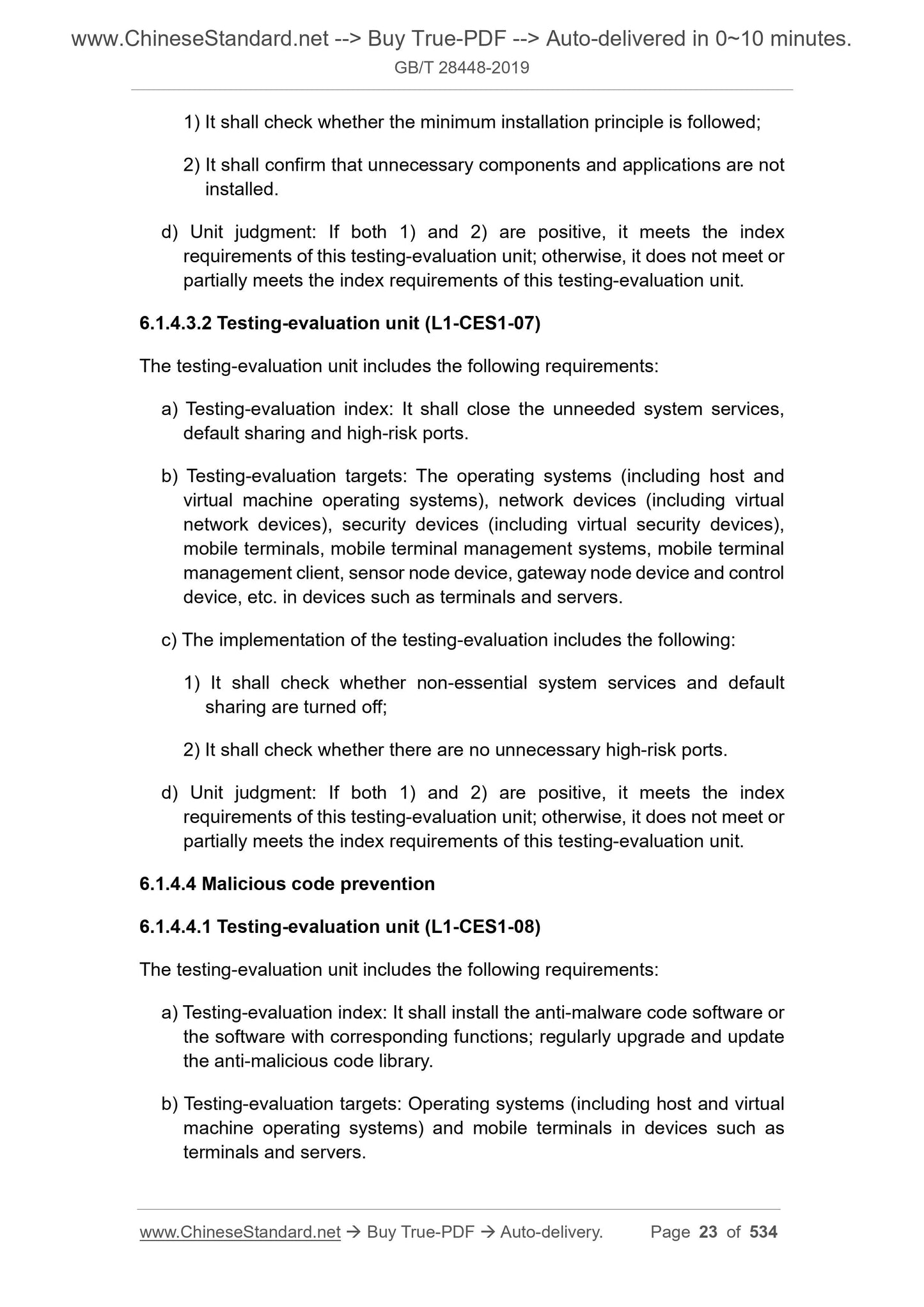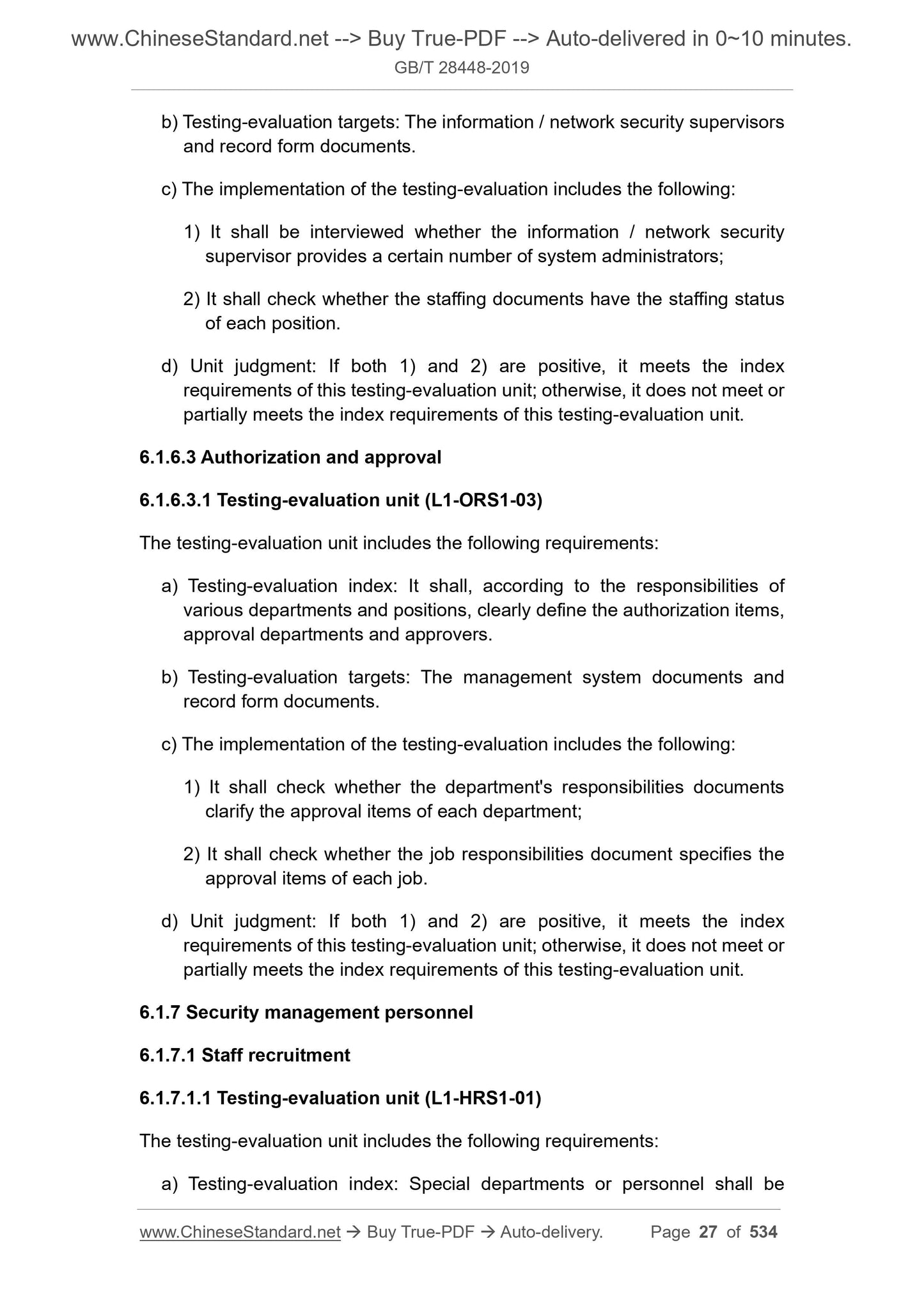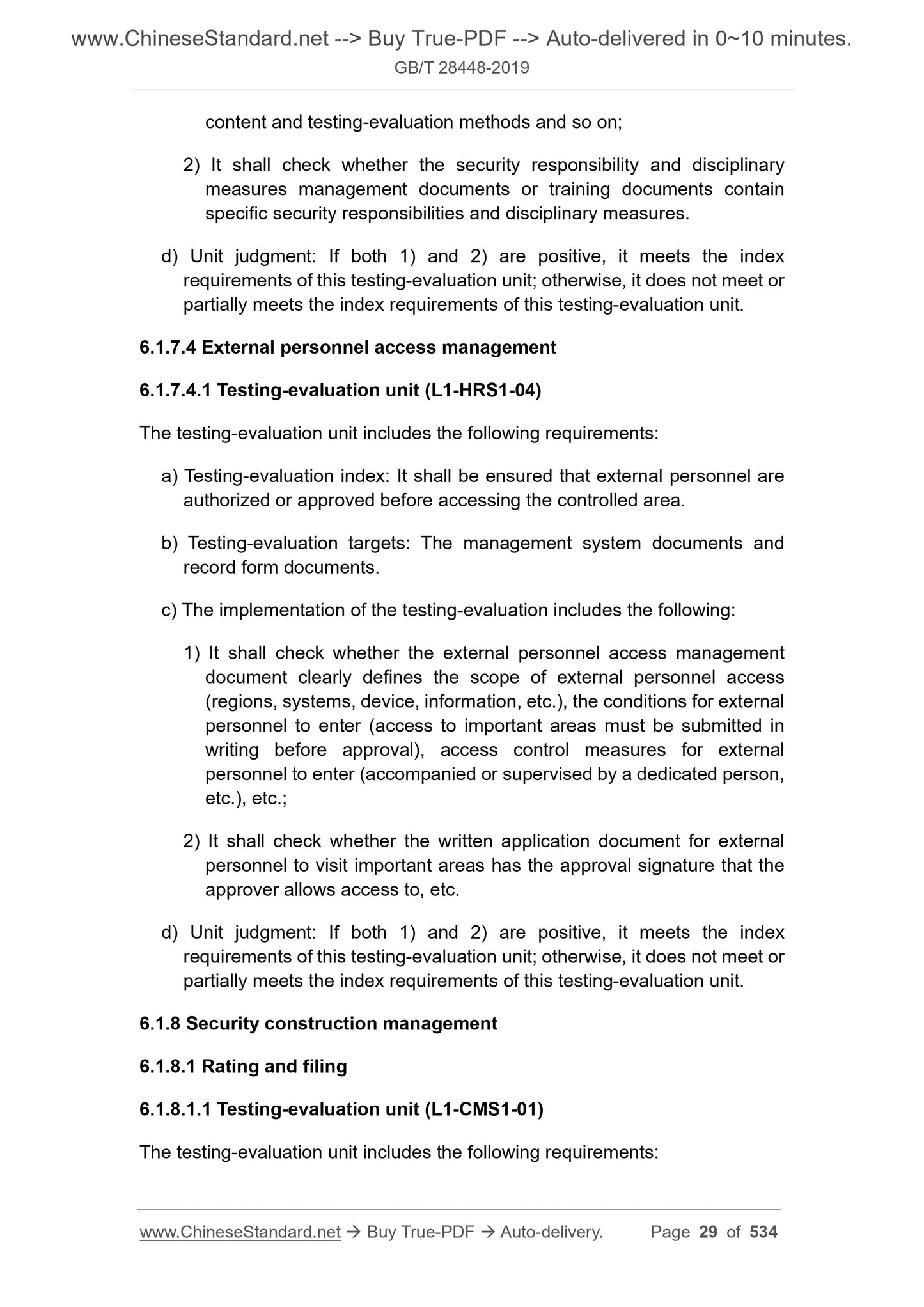1
/
of
12
www.ChineseStandard.us -- Field Test Asia Pte. Ltd.
GB/T 28448-2019 English PDF (GB/T28448-2019)
GB/T 28448-2019 English PDF (GB/T28448-2019)
Regular price
$2,405.00
Regular price
Sale price
$2,405.00
Unit price
/
per
Shipping calculated at checkout.
Couldn't load pickup availability
GB/T 28448-2019: Information security technology - Evaluation requirement for classified protection of cybersecurity
Delivery: 9 seconds. Download (and Email) true-PDF + Invoice.Get Quotation: Click GB/T 28448-2019 (Self-service in 1-minute)
Newer / historical versions: GB/T 28448-2019
Preview True-PDF
Scope
This standard stipulates the general requirements and extended requirementsfor testing-evaluation of security of classified protection targets.
This standard is applicable to security evaluation service agencies, operation
and use units of classified protection targets, for competent departments to
conduct security evaluation and provide guidance on the security status of
classified protection targets; it is also applicable to network security functional
departments when conducting supervision and inspection of the classified
protection of cybersecurity.
Note. The level-5 classified protection target is an important supervision and
management target, which has a special management mode and security evaluation
requirements, so it is not described in this standard.
Basic Data
| Standard ID | GB/T 28448-2019 (GB/T28448-2019) |
| Description (Translated English) | Information security technology - Evaluation requirement for classified protection of cybersecurity |
| Sector / Industry | National Standard (Recommended) |
| Classification of Chinese Standard | L80 |
| Classification of International Standard | 35.040 |
| Word Count Estimation | 290,292 |
| Date of Issue | 2019-05-10 |
| Date of Implementation | 2019-12-01 |
| Issuing agency(ies) | State Administration for Market Regulation, China National Standardization Administration |
Share
